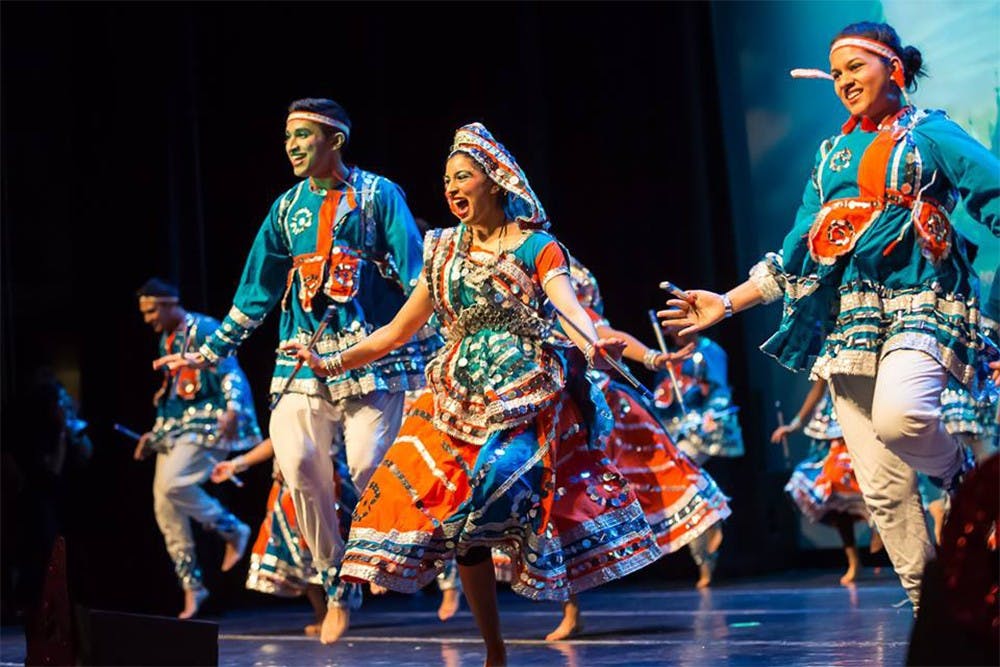The traditional Raas dance from Gujarat, India, became nationally competitive in 2009 when a group of students founded Raas Royalty. Now, more than 50 colleges practice year-round for the national dance competition in April.
Raas is a three-step dance involving the twirling and hitting of sticks, called dandiyas.
One of the final rounds leading up to nationals will be at 7 p.m. Saturday in the IU Auditorium, with eight teams flying in from across the country. The lineup includes teams from Georgia, California and Maryland, and the IU Hoosier Raas team will be performing as an opening exhibition act.
“This year, people are saying that we’re a national preview because we have the best teams coming,” sophomore Raas Royalty executive board member Rahee Patel said. “We usually have pretty good teams every year, but this year we have insane talent.”
Every team has either placed in other competitions this year or has previously gone to nationals, Patel said.
The teams sent in video applications in November and were narrowed down by an intense judging process, senior co-director Parina Maniar said. The rubric used for picking teams to compete is the same as the rubric used at the competition, which is determined by the organizers of the national competition.
“It’s really intense,” Maniar said. “It’s just as competitive as any other sport. What they look for is high energy and dramatic facial expressions. The formations are also important, if they’re clean and they hit well.”
Another judging category is artistic creativity, or the story told through the dance, Maniar said.
This year, the Hoosier Raas team’s chosen theme is “The Wizard of Raas,” Maniar said. Dorothy loses her magic dandiya in the twister and finds it at the end of the routine after helping the other characters find missing parts.
The traditional form of Raas originated from the Navratri festival in Gujarat, comprised of nine days of dancing, senior co-director Prachi Patel said. As the dance form became more competitive, teams started to put creative twists on it.
“People started bringing in Western culture, whether it’s music or dabbing for a quick second in their routines,” Prachi said. “Every year I feel like they get more and more creative with what they bring in.”
Maniar said she never expected to be drawn as close to her roots as she has in college because of Raas. A lot of students who are first-generation Americans can use their newfound knowledge of Indian culture to bond with their parents who grew up in India, Prachi said.
An important aspect of Raas at IU that doesn’t get heard often enough is that you do not need to be Indian to participate, Prachi said.
“It’s very rare to see traditional Indian dancing,” Rahee said. “Kids find it really cool, and it helps them to understand Indian culture. I don’t think you really get it until you’ve seen it.”






